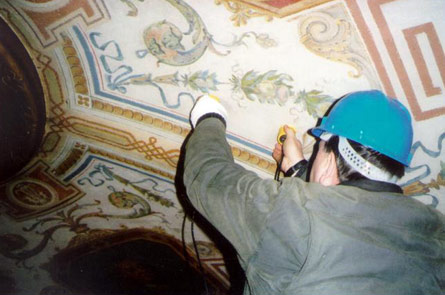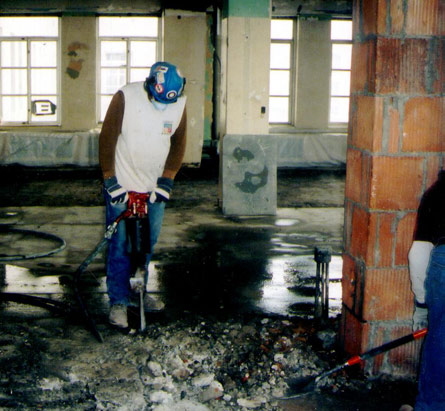When demolition and construction for a seismic retrofit shook things up at the Alfred E. Smith Building, concerns for the Historic Lobby loomed. GeoSonics/Vibra-Tech brought confidence and stability, allowing successful completion of the project.



The Alfred E. Smith building in Albany, NY is a 32-story office building built in the late 1920s. The restoration of this art-deco style building, with its historic bronze and marble lobby, began in 2002. This $84 million upgrade consisted of demolition of existing walls to allow for an open-space floor plan while also chipping the concrete floors to allow for structural steel retrofits. The demolition and chipping activity started on the upper floors and advanced toward the historic lobby. During this advance, project management noticed plaster falling from the ceilings located on the floors below the demolition activity. Project management called on GeoSonics/Vibra-Tech to develop a plan to protect and monitor the historic lobby.
GeoSonics/Vibra-Tech collected vibration time histories for several types of chipping hammers. These data were utilized to determine the energy output and frequency content of the chipping hammers. In addition, vibration time histories from these energy sources were recorded on multiple levels of the structure to determine the structure’s response and attenuation characteristics. GeoSonics/Vibra-Tech made ultrasonic propagation velocity measurements of the plaster in several areas of the lobby. These data, along with the tensile and compressive strength of the plaster, were utilized to calculate the allowable particle velocity limit for the plaster. Recommendations were given for the appropriate chipping hammers to utilize at a given floor level above the historic lobby as well as techniques to be utilized to minimize vibration propagation to the lobby ceiling. Fifteen velocity sensors were attached to the lobby ceiling and continuously monitored by seismic recorders. The seismic recorders were programmed to report the highest particle velocity every 60 seconds. An alarm warning was transmitted to project management via cell phone from the monitoring system if vibration levels exceeded 80 percent of the established criteria. The project was successfully completed and the historic lobby remained intact.
Check out our Vibration Monitoring Services or Vibration Mitigation FAQs for more information.
